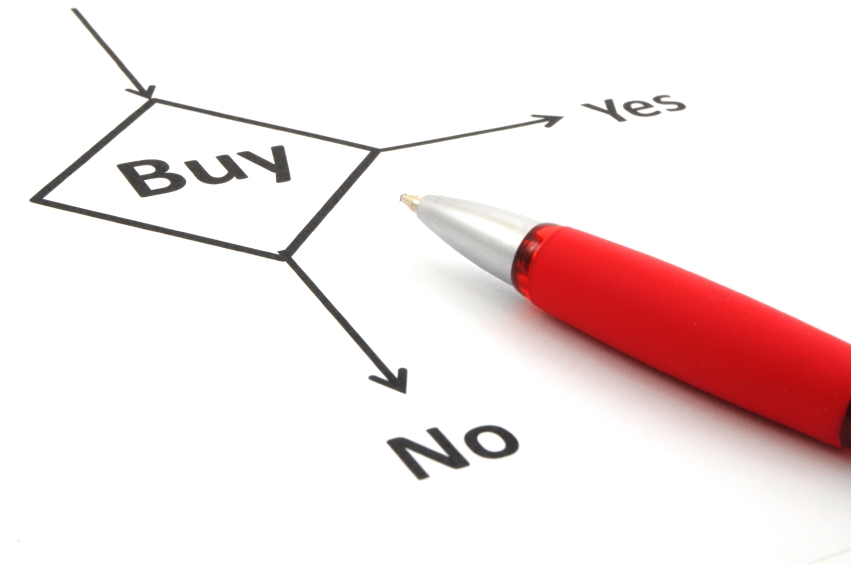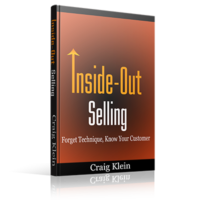What is the buying process your customers goes through? It’s not because they saw an awesome presentation, it’s because they have a need or a problem that is affecting them on an emotional level. Even in business situations, people buy for emotional reasons.
We all have pretty basic emotional needs, and in the end, every purchase can be tied back to satisfying one or more of those needs. The business reasons for the purchase are just the rationalization of that emotional need. The technical reasons are just another way of rationalizing the need.
“Why did you buy those expensive new headphones?”, she asks me. “Because I’m editing all of this audio for our Youtube videos and those cheap ones didn’t have the frequency range to let me filter out the static properly.”, I say. When the real truth is that I have been watching Youtube videos about how to make awesome, professional videos and the “experts” all use these expensive headphones and I want to feel like and look like an expert.
Buying Phases
Many buyers cannot identify the real emotional reasons they’re making a purchase themselves because, they are not always conscious of it. This is why typical television advertising works so well. I want to feel and look like the people I see in the ad so I buy the weight loss product whose name you mention at the end.
Salespeople can best maximize their opportunity by developing a keen sense of where the buyer is in the process.
The buyer may not be able to say that they’re unhappy with their job and would like a trip to Vegas to blow off steam, but, when presented with an opportunity to do just that, which can be rationalized as making an investment in marketing at a trade show, they might move mountains to make it happen.
Most B2B sales discussions never touch on the emotional aspects. It can be perceived as inappropriate in a professional setting. There may be more than one person influencing the decision, and they’ll each have their own emotions of course. Typically, the conversation centers on the business and technical rationalizations for the purchase.
Company’s frequently agonize over defining their sales process for the purpose of measuring sales activities and tracking sales opportunities in their CRM software. However, creating a sales process before understanding your customer’s buying process can be a catastrophic mistake.
Every buying process goes through the exact same phases that may be at an emotional, business, or technical level (or all three).
- Awareness – the customer first becomes aware of an opportunity, need or problem.
- Action – the customer decides to do something about it.
- Research – the customer absorbs information about causes of the problem, and possible options/solutions., etc. Here they are primarily accumulating enough knowledge to confirm that they have a clear understanding of the problem or opportunity and the range of possible options/solutions.
- Engagement – the customer starts to take action with one or more solution provider – filling out a form on the site, calling sales, contacting support, downloading a report, etc. Here they are beginning to consider specific solutions – options, pricing, terms, etc.
- Purchase – the customer at least thinks they know what they want to buy, may attempt to negotiate and may or may not actually make the purchase.
Here’s a breakdown of the emotional state of the buyer, and “do’s”/”don’ts” for each phase:
Awareness
Emotional State: Emotions high. Possibly scared or excited. Possibly not all that rational.
Don’t: Offer solutions. Quote prices. Be Aggressive. Start talking about yourself. Don’t fix.
Do: Be empathetic. Ask open ended questions. Get them talking about the story behind the situation. Keep the focus of the conversation on them. Help them process this new situation by listening. Use validating statements – “That must have been tough.” “I bet that made you angry.” “Were you scared?” “How did you feel about that?” “Tell me more about that.” Keeping them talking by using open ended questions helps keep them engaged and increases the opportunity of moving the conversation to the next stages. Keeping them talking is a great sign that the conversation is moving forward . Always use open ended questions, Not Yes or No questions.
Action
Emotional State: Resolved. Curious. Possibly jumping to conclusions.
Don’t: Jump to the purchase phase! Suggest solutions, and. Tell them what they should do.
Do: Help them rationalize the potential purchase and. Help them envision themselves in the future once the solution is in place. Ask questions like “What will you do with your time once this is over/fixed?” “How will you feel once this is all over?” Help them envision the realistic decision making process – “Who else will be involved in making this kind of change?” “Do you think they see the problem the way you do?”
Research
Emotional State: Investigative. Inquisitive. Questioning.
Don’t: Quote prices. Provide spec sheets or brochures or contracts. Get defensive if they’re investigating options that aren’t in your sweet spot.
Do: Tell stories about other customers. Share case studies. Provide educational materials. Share informative but neutral content (not sales pitches or brochures).
Engagement
Emotional State: Ready to talk. Open to discussions, meetings, presentations, etc. Coordinating. Accommodating.
Don’t: Jump to Closing or Asking for the Order.
Do: Help them be sure they’ve thought of everything and are being thorough. Ask for written requirements docs, and offer to help them document the requirements. Revisit who’s involved in the decision. Ask about budget authority.
Purchase
Emotional State: Get it done mode. Open and honest. Negotiating.
Don’t: Assume you’re the only vendor they’re having this conversation with. Buyers often “pretend” to be in buying mode when they’re not. Don’t assume the person you’re talking with has the sole authority to execute the purchase.
Do: Qualify their readiness to make the purchase. “When do you need to have this up and running/in place/delivered?” “Are there others that need to be part of this decision?” “Are you still considering other vendors/solutions?” “Who will be involved in the implementation? What’s their availability for this
project?”
This post has been excerpted from “Inside-Out Selling”. Get your copy here.



